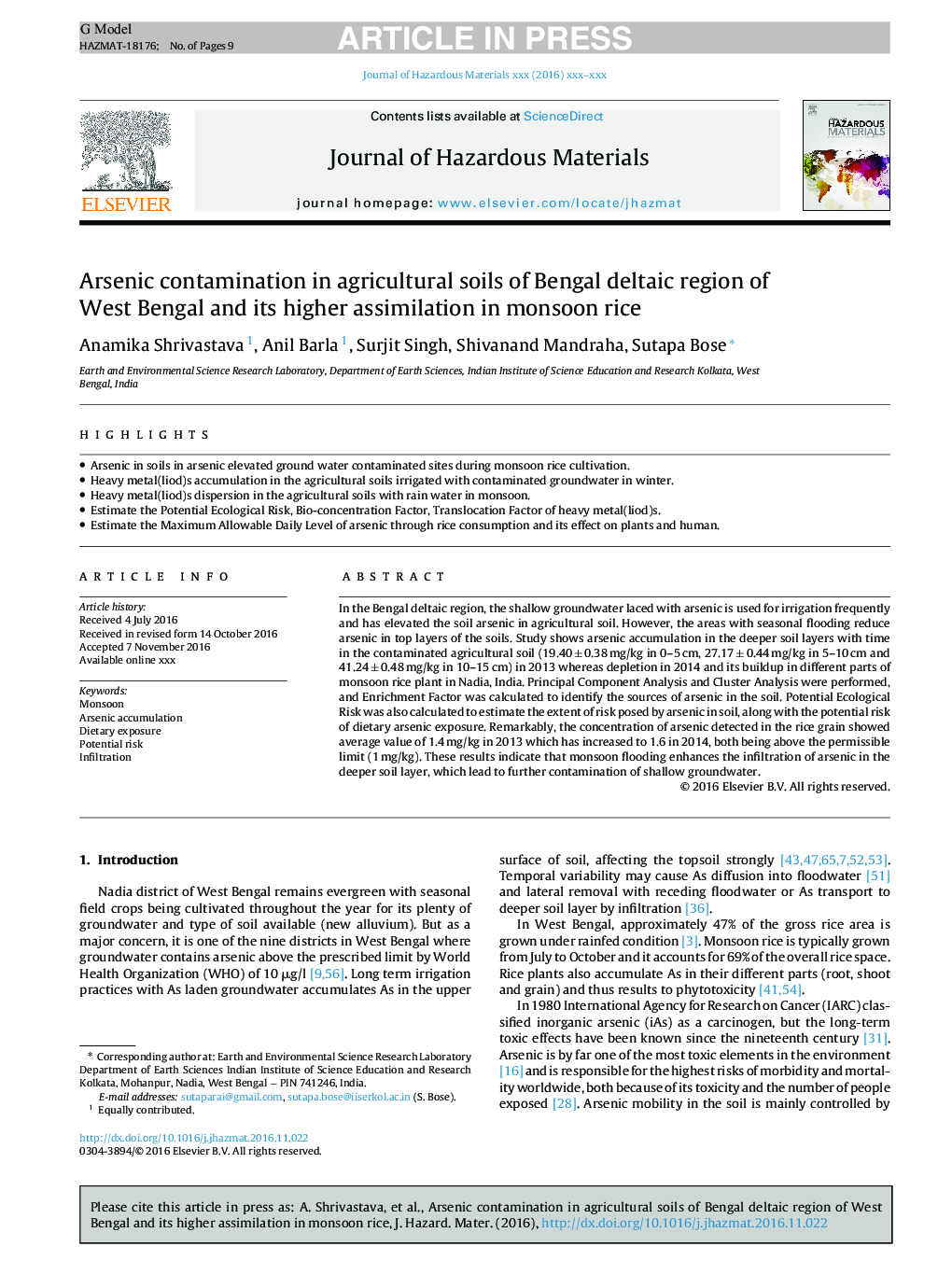| Article ID | Journal | Published Year | Pages | File Type |
|---|---|---|---|---|
| 4979880 | Journal of Hazardous Materials | 2017 | 9 Pages |
Abstract
In the Bengal deltaic region, the shallow groundwater laced with arsenic is used for irrigation frequently and has elevated the soil arsenic in agricultural soil. However, the areas with seasonal flooding reduce arsenic in top layers of the soils. Study shows arsenic accumulation in the deeper soil layers with time in the contaminated agricultural soil (19.40 ± 0.38 mg/kg in 0-5 cm, 27.17 ± 0.44 mg/kg in 5-10 cm and 41.24 ± 0.48 mg/kg in 10-15 cm) in 2013 whereas depletion in 2014 and its buildup in different parts of monsoon rice plant in Nadia, India. Principal Component Analysis and Cluster Analysis were performed, and Enrichment Factor was calculated to identify the sources of arsenic in the soil. Potential Ecological Risk was also calculated to estimate the extent of risk posed by arsenic in soil, along with the potential risk of dietary arsenic exposure. Remarkably, the concentration of arsenic detected in the rice grain showed average value of 1.4 mg/kg in 2013 which has increased to 1.6 in 2014, both being above the permissible limit (1 mg/kg). These results indicate that monsoon flooding enhances the infiltration of arsenic in the deeper soil layer, which lead to further contamination of shallow groundwater.
Related Topics
Physical Sciences and Engineering
Chemical Engineering
Chemical Health and Safety
Authors
Anamika Shrivastava, Anil Barla, Surjit Singh, Shivanand Mandraha, Sutapa Bose,
